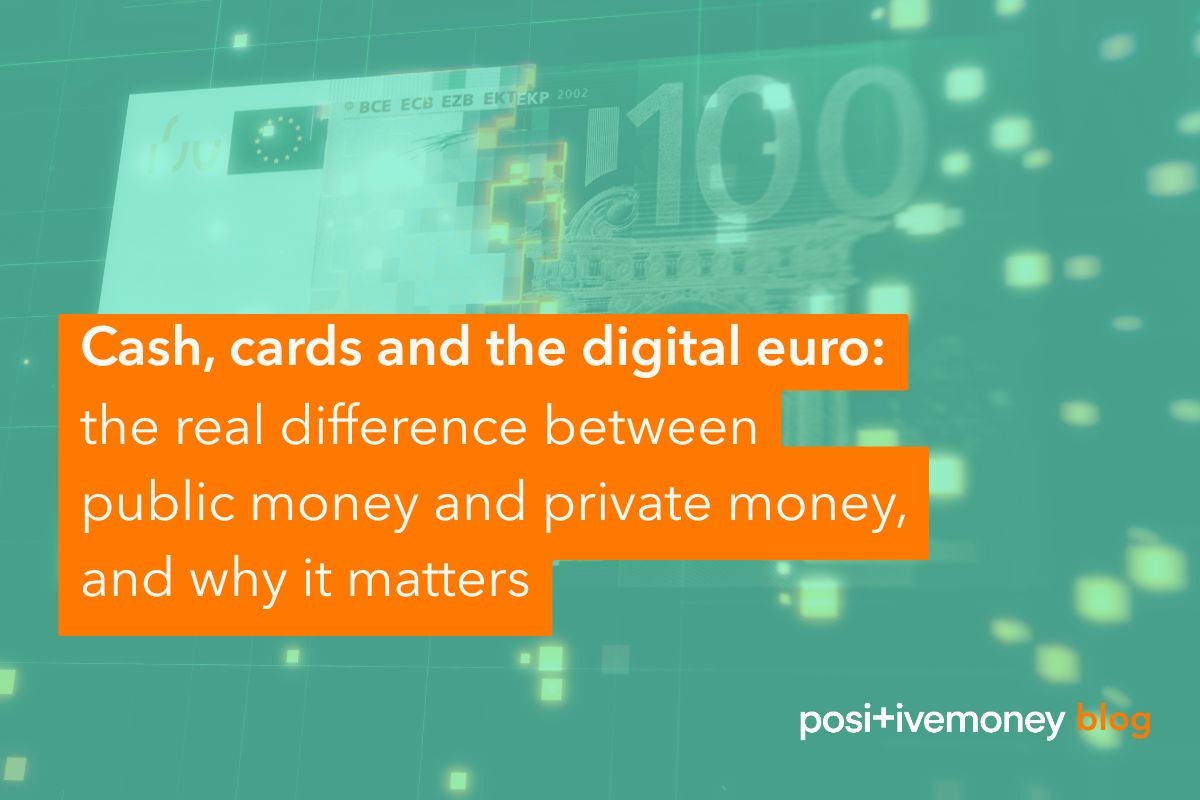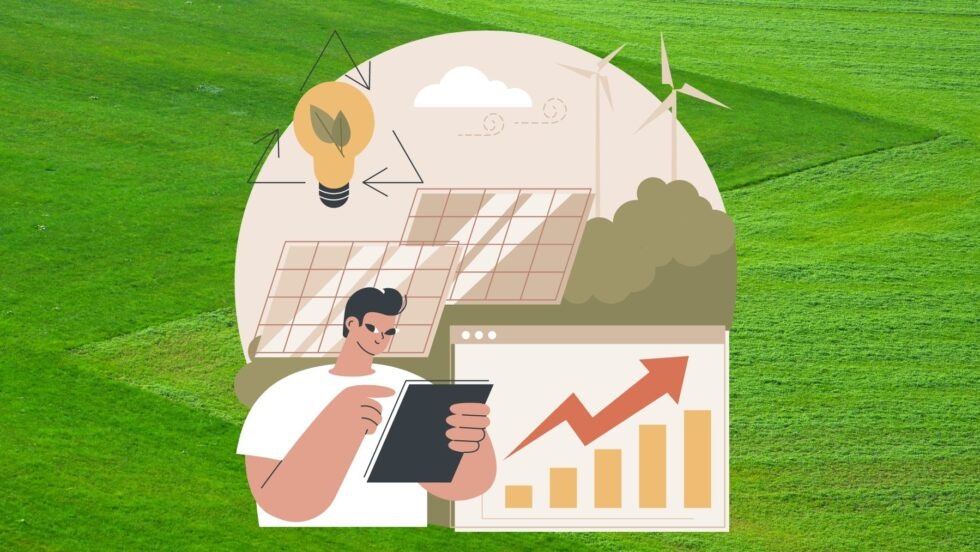
The future of moneyEU
10 September 2025
As the urgency to combat climate change grows, so does the misconception about the financial infeasibility of the transition to sustainable economic and energy systems. In this article, we have collected four of the narratives – or myths – that are most commonly used by those who oppose green transition measures.
As the urgency to combat climate change grows, so does the misconception about the financial infeasibility of the transition to sustainable economic and energy systems. In this article, we have collected four of the narratives – or myths – that are most commonly used by those who oppose green transition measures. Opponents often claim that the green transition is too costly, so we have put their claims to a reality check.

Some critics of green policies and climate commitment, including important figures like Belgian Central Bank chief Pierre Wunsch, argue that the green transition will make countries and their people poorer.
Transitioning to a sustainable economy will require the upgrading of buildings where we live and work, changes to the way we produce and do business, a need to build new energy infrastructures and adapt existing ones to climate change, and much more. This is a systemic change that undoubtedly calls for huge investments – even more than we have done so far. However, the statement that this transition will impoverish Europe in some way, is simply not true. In reality, it presents an economic opportunity for Europe and the whole world, as these investments will, in fact, provide the engine for growth.
The World Economic Forum suggests that as the world adopts greener energy sources and benefits from related energy efficiency improvements, there will be a reduced demand for energy, emissions and costs will decrease, and all of this while global economic growth persists. By 2050, it’s projected that only 2.1% of global GDP will be spent on energy, a reduction from today’s 3.4%.
Households will benefit from this transition as well. Homes that are powered by renewables and designed for energy efficiency for example, will help people to reduce their energy costs in the long run.
Those who emphasise the high cost of climate action should also keep in mind the other side of the coin – namely the staggering cost of climate inaction. A report from the European Environment Agency (EEA) warns that the cumulative costs of not acting to mitigate the climate crisis could be substantially higher – potentially up to a hundred times more than the cost of mitigation measures.
According to the Italian Istituto Affari Internazionali (IAI), the development of sectors crucial for the green transition can result in a net increase of up to 884,000 jobs in climate-friendly and carbon neutral sectors.
At the same time, it’s true that the shift from fossil fuels to clean energy will see oil and gas giants decline, and will need significant transformations in other key parts of our economies. This means that a successful green transition cannot come without extensive training, upskilling and adaptation to new technologies and processes of entire economic sectors. Recent protests and discontent among European farmers serve as a stark reminder of the consequences of leaving these sectors alone. Governments and EU institutions have the responsibility to support workers and ensure that the green transition is a fair transition too.
Another common argument that is used to oppose green transition measures, is that this will lead to economic instability and an increased cost of living. This narrative is, however, fundamentally flawed.
The European Central Bank (ECB) itself, whose primary mandate is to maintain price stability in the eurozone, has highlighted that a quicker green transition will bring benefits for households, for the stability of the banking system and of the economy as a whole.
During the recent years of high inflation, we’ve experienced firsthand that our reliance on imported fossil fuels – which are more easily subject to price fluctuations due to conflicts and geopolitical tensions – is detrimental not only to our planet, but also to our economies. In contrast, countries with a high proportion of their energy production from domestic renewable sources are less vulnerable to such fluctuations.
While the private sector’s involvement in the green transition is essential, it’s unrealistic to expect private banks and companies, which profit from the status quo, to lead on this transition.
The International Energy Agency (IEA) expects the public sector to contribute to approximately 30% of global climate finance. Governments must play a crucial role in financing key infrastructures for the green transition and adapting our economies to climate change, while making them sustainable.
Is there a real shortage of public funding to cover these investments? We argue that funds already exist, but are currently allocated to other areas, including even fossil fuels. In fact, EU member states continue to financially support the fossil fuel industry, which has been subsidised at an all time high since 2015. So the problem is not so much a lack of finance, but rather a lack of political will to shift from a fossil fuel-based economy to a sustainable one.
However, this transition is imperative and requires a gradual withdrawal of support for the fossil fuel industry. This must coincide with increased investment in a fair energy transition that offers people sustainable and affordable alternatives to fossil fuels. Our governments could use various financial instruments to facilitate this shift. Taxation, for example, can be an important lever: a wealth tax system could bring substantial resources to finance climate initiatives. It’s estimated that wealth taxation schemes could generate between 180 and 1280 billion euros to ensure a just ecological transition for all. Alongside wealth taxation, some propose introducing a ‘windfall’ tax on fossil fuel companies’ profits. Recently, the Secretary General of the United Nations, António Guterres, spoke in favour of this change.
It’s also important to bear in mind that, if not supported by public subsidies, private investments in the clean energy transition fail. This has been the case in Germany and China, where a reduction in subsidies has resulted in new renewable energy installations being reduced by almost half.
This is where central banks can help. We, along with our partners, have been advocating for the ECB to incorporate environmental conditions into its refinancing programmes for private banks. Our proposal is for the ECB to offer a lower interest rate when lending money to banks, with this being conditional upon the banks directing affordable financing towards green transition projects, such as those in the renewable energy and energy efficiency sectors. This is an example of how a public institution can help mobilise private funding towards initiatives that are beneficial for people, our economies and the planet.
The EU has set some of the most ambitious climate targets through its Green Deal, with the goal of achieving a 55% emissions reduction by 2030, and of becoming the first climate-neutral continent by 2050. Despite this, current energy and climate plans of many EU countries do not meet the ambition of these objectives, as highlighted by the European Commission itself.
On a global scale too, the latest report from the IEA indicates that the current plans for renewable energy development are not aligned with the targets set at the last UN Climate Change Conference (COP28).
Another critical issue that requires more attention – and action – from the political leaders of the Global North, is the support for the transition of the Global South countries. While these countries are those least responsible for climate and environmental degradation, they are often the most vulnerable to the effects of climate change, and are also penalised by the financial mechanisms currently in place. It’s therefore incumbent upon our political leaders to ensure that these countries are not left behind in the transition to a greener economy. We hope that this will be taken seriously as a priority in the upcoming dialogues on climate finance, including the COP29 in November.
With this blog, we have looked to emphasise that the transition to a sustainable economic system is not only necessary for the future of the environment and therefore of our own, but it is also affordable.
Having said that, it’s the job of governments and international institutions to ensure that the transition is affordable for all.
The current system disproportionately favours elite groups (the 1%) at the expense of the rest of the population (the 99%). The recent energy crisis exemplified this: while people have grappled with soaring living costs, fossil fuel corporations reaped record profits. Similarly, during recent central bank interest rate hikes aimed at combating inflation, private banks have been the main (if not the only) beneficiaries.
The green transition cannot perpetuate this kind of inequity. Policymakers must establish a robust policy framework that ensures individuals, businesses and workers (namely the 99%) are not burdened by the costs of this necessary transformation. In other words, they need to prioritise fairness and place people at the heart of the green transition. Failure to do so risks breeding discontent and scapegoating climate actions.
